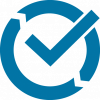Related Content
 |
Balancing Process and Tools The limits of a tool may lead us to realize that we are not working as effectively as we can, and often, changing a tool is part of the solution. But there are good and bad ways to select a tool and how you use it. In particular there are risks when you focus first on tools before considering the problem. |
|
 |
Bananas and Critical Thinking People skilled in critical thinking are willing to accept new findings and evidence, even if it means reassessing previous beliefs. They aim to rely on reason rather than emotion in making decisions, and they seek to detect inconsistencies in reasoning, including their own. It's an important skill to have in software. |
|
 |
DevOps Isn’t a Fad, So You Need to Invest Now It’s easy to get wrapped up in the promise of ten-times greater production, shorter development times, smarter testing, and everything surrounding the fresh idea of the day, but when it comes to DevOps, there’s no longer a need for trepidation. DevOps is here to stay. |
|
 |
Weird Ideas for Improving Your Productivity at Work You've tried all the typical tips for increased productivity—scheduling, timeboxing, prioritizing—but you still find yourself distracted and wasting time. Maybe it's time to give one of these unconventional ideas for improving productivity a try. They're so crazy, they just might work. |
|
 |
Why the Gig Economy Thrives in the World of DevOps Even if the industry is booming, it’s not easy filling the full-time DevOps roles. Every software team is vying to find the perfect person to come in and establish a culture to promote improved software release cycles, software quality, security, and rapid feedback on product development. But it's not easy. |
|
 |
An Agile Approach to Change Management Many organizations are reluctant to introduce new tools or technologies, or even to update existing ones. The reason is often framed in terms of risk management, but agile teams already have the tools to manage the risk of change: testing and experiments. These approaches together eliminate gaps in risk identification. |
|
 |
5 Tips for Choosing Your First Agile Project When transitioning to agile, applying agile methods to a single project is a great way to get started. However, care must be taken to ensure the project you choose is appropriate—it shouldn't be too large, take too long, or be too risky. Here are five tips to help you pick the right project for your agile pilot. |
|
 |
Driving Continuous Improvement to the Entire Organization In traditional agile approaches, retrospectives are valuable to team improvement. However, when teams encounter organizational issues beyond their control, such as project structure, interorganizational communication, or resources, it's more difficult. Here's how to expand continuous improvement to the whole company. |





